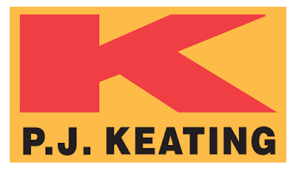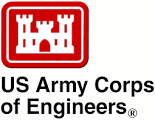News

EPA Selects Recipients of Nearly $12 Million in Pollution Prevention Grants Funded by the Bipartisan Infrastructure Law
Sep 08, 2022
WASHINGTON - Today, the U.S. Environmental Protection Agency (EPA) announced the selection of 39 recipients across the country that will receive nearly $12 million in pollution prevention (P2) grants made possible by President Biden’s Bipartisan Infrastructure Law’s historic $100 million program investment. These grants will allow states and Tribes to provide businesses with technical assistance to help them develop and adopt P2 practices to prevent or reduce pollution before it is even created, while also reducing business and liability costs.
Proposed projects include reducing PFAS contamination in food packaging and food waste recycling streams, increasing awareness of green cleaning chemicals in businesses and schools, and helping underserved communities implement P2 best practices to reduce waste and emissions from industrial plants.
“The grant selections announced today and made possible by the Bipartisan Infrastructure Law will reduce air and water pollution in communities in need,” said EPA Administrator Michael S. Regan. “Many of the grants selected support the Biden-Harris Administration’s commitment to addressing environmental justice concerns in overburdened communities and the impacts of climate change.”
The P2 Program advances President Biden’s Justice40 Initiative, which aims to deliver at least 40 percent of the benefits of certain government programs to underserved communities. State and Tribal programs awarded grants will not be required to provide matching funds, as is required by traditional P2 grants. The ability to waive the match requirement under the Bipartisan Infrastructure Law, in addition to the new National Emphasis Area (NEA) for businesses in Indian country, helped to broaden and diversify the applicant pool. Many grants selected will support implementing pollution prevention practices in Indian country.
The United States produces billions of pounds of pollution each year and spends billions of dollars per year controlling this pollution. Preventing pollution at the source, also known as P2 or source reduction, rather than managing waste after it is produced is an important part of advancing a sustainable economic and environmental infrastructure. P2 can lessen exposure to toxic chemicals, conserve natural resources, and reduce financial costs for businesses, particularly costs associated with waste management, disposal and cleanup. These practices are essential for protecting health, improving environmental conditions in and around disadvantaged communities, and preserving natural resources like wetlands, groundwater sources, and other critical ecosystems.
Selected and awarded grantees will document and share P2 best practices they identify and develop through these grants so that others can replicate the practices and outcomes. Each selected grantee will address at least one of the NEAs, which were established to focus resources to achieve measurable results and to create opportunities to share information among P2 grantees and businesses affiliated with similar NEAs. Each selected grantee will also develop at least one case study during the grant period on P2 practices that are new or not widely known or adopted, or where detailed information on the P2 practices could benefit other businesses or P2 technical assistance providers.
These grants are the first of five P2 grant programs over the next five years that will be funded by the Bipartisan Infrastructure Law. EPA has announced two other new P2 grant opportunities funded by the Bipartisan Infrastructure Law. One will encourage products, purchasing, and/or supply chains that are safer, more sustainable, and environmentally preferable and the other will encourage businesses that are working in, or working with, underserved and disadvantaged communities to adopt P2 practices. Later this year, EPA also anticipates awarding traditional P2 grants administered by the agency as it has for over 25 years.
EPA anticipates that it will award the grants once all legal and administrative requirements are satisfied. Grants supported with Bipartisan Infrastructure Law funds will be fully funded at the time grants are awarded.
A full list of the entities selected to receive funding through the grants funded under the Bipartisan Infrastructure Law can be found below.
Read more about P2 and the P2 Grant Program.
List of Grantees
Alabama: University of Alabama
Alaska: Knik Tribal Council
Arizona: Arizona Department of Environmental Quality
California: California Department of Toxic Substances Control
California: University of California, Berkeley
California: Viejas Band of Kumeyaay Indians
Delaware: University of Delaware
Georgia: Georgia Institute of Technology
Idaho: Idaho Department of Environmental Quality
Illinois: University of Illinois, Chicago
Illinois: University of Illinois, Urbana-Champaign, Prairie Research Institute
Illinois: University of Illinois at Urbana-Champaign, Smart Energy Design Assistance Center
Iowa: Iowa Department of Natural Resources
Kansas: Kansas State University
Kentucky: Kentucky Energy and Environment Cabinet, Department for Environmental Protection
Maine: University of Southern Maine
Maryland: University of Maryland, College Park
Massachusetts: University of Massachusetts, Boston
Michigan: Central Michigan University
Minnesota: Minnesota Pollution Control Agency
Missouri: Missouri State University
Missouri: Missouri University of Science and Technology
Montana: Montana State University, Bozeman
Nebraska: University of Nebraska, Lincoln
New Jersey: Rowan University
New York: St. Regis Mohawk Tribe
North Carolina: University of North Carolina at Chapel Hill
North Carolina: East Carolina University
Pennsylvania: Northampton County Area Community College
Oklahoma: Cheyenne and Arapaho Tribes of Oklahoma
Oklahoma: Choctaw Nation of Oklahoma
Oklahoma: Oklahoma Department of Environmental Quality
Oregon: Oregon Department of Environmental Quality
Pennsylvania: Pennsylvania State University, Pennsylvania Technical Assistance Program
Pennsylvania: Slippery Rock University
South Carolina: Clemson University
Vermont: Vermont Department of Environmental Conservation
Virginia: Virginia Department of Environmental Quality
West Virginia: West Virginia University
Professional Presentation









































































































